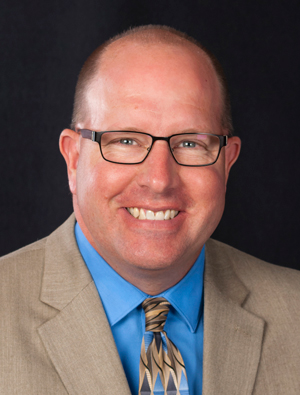About Cleveland Clinic
Cleveland Clinic is an academic medical center founded in 1921. In addition to the main hospital campus in downtown Cleveland – which has 1,400 beds, 101 operating rooms and 59 buildings – the system has 10 regional hospitals and more than 150 outpatient locations in northern Ohio.
Steve Pohlman
Senior Director, Materials Management
Cleveland Clinic
Cleveland, Ohio
A native of Southwest Ohio, Steve Pohlman received his undergraduate degree in industrial engineering from the University of Dayton. He also holds an MBA from Wright State University. Prior to beginning his healthcare career in 1997, he worked in manufacturing in both the auto and welding industries.
He joined Cleveland Clinic as part of the Akron General Health System acquisition in 2015. Prior to that, he held many positions with Akron General Health System, including associate vice president of service operations, director of materials management, director of linen services, manager of procurement and purchasing, and manager of sterile processing. Before joining Akron General, he worked as a sourcing manager for Premier Health Partners in Dayton, Ohio. Currently, he and his wife reside in Northeast Ohio with their two children.
Journal of Healthcare Contracting: Can you describe the most challenging and/or rewarding supply-chain-related project in which you have been involved in the past 12-18 months?
Steve Pohlman: Inventory management transformation (or IMT) is an enterprise wide initiative. The enterprise consists of 10 regional hospitals and the main campus. Our goal is to use RFID technology to manage implantable devices (orthopedic implants, cardiac rhythm management devices, etc) across our enterprise. We will do so in the OR, cath lab, EP lab and interventional radiology, so everyone in the system will have complete visibility to what we have on hand. Prior to implementing RFID, our IMT Center of Excellence – which is a group of 10 project managers – is working on a complete workflow redesign in an effort to relieve nurses from managing supplies, so they can focus on patient care.
JHC: Please describe a project you look forward to working on in the next year.
Pohlman: In 2019, we’ll take the IMT to our main campus – 88 ORs across six buildings. We’re excited about it, because not only will it free up our nurses’ time and help us manage inventory, but it will contribute to our systemwide goal of patient safety. Because all implants will be RFID-tagged, we will have complete visibility for improved implant management.
JHC: How have you improved the way you approach your profession in the last five to 10 years? Did you have any help doing so, or was there any particular incident that was particularly significant?
Pohlman: I have always been involved in operations and managing change. Over the last five to 10 years, I have gotten better at going into every situation with my eyes – and my ears – wide open. Healthcare is extremely fast-paced, and we operate in a very matrixed organization. A major part of my responsibility is encouraging my team to be change agents. And a big part of that is listening. When I was younger, I thought I had all the answers. Now, I listen more and react less. And when I do respond or give feedback, I make sure it’s honest. It’s important to be honest, to be yourself, to follow your morals and values
JHC: In your opinion, what will be some of the challenges or opportunities facing the next generation of supply chain professionals? What should they be doing now to prepare to successfully meet those challenges and opportunities?
Pohlman: Future supply chain professionals will have the same cost pressures that we’ve all had, but they will find new ways to address them, perhaps through third party relationships or new technologies. They will also have to cultivate an environment of customer service. I take the attitude that if “my” nurses don’t have what they need to take care of the patient, I’ve failed somehow. Tomorrow’s professionals will have to get out of their offices and meet their customers in their territory. People enjoy telling you what they do and how they do it. It’s a way to build relationships. It’s good to be in tune with technology; but don’t forget the art of conversation and relationship-building.

